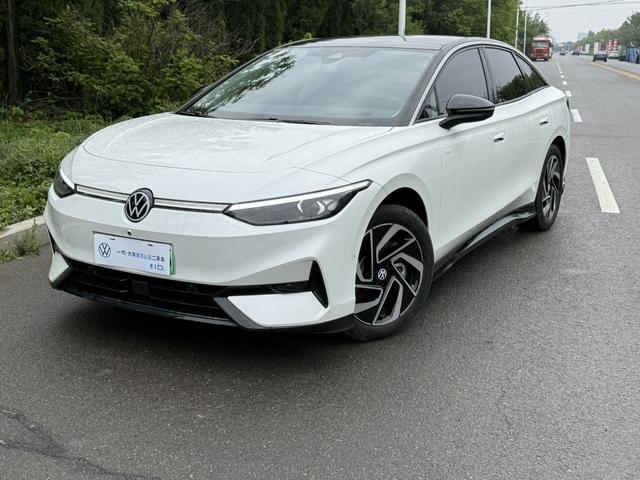The Rise of a Cleaner Transportation Era
As climate concerns grow and urban infrastructure evolves, Electric Vehicles are rapidly becoming central to global sustainability strategies. From reducing greenhouse gas emissions to lowering long-term vehicle ownership costs, the transition from traditional internal combustion engines to Electric Vehicles marks a profound shift in how societies move. This evolution is not just a trend but a cornerstone of future transportation solutions that balance environmental consciousness with technological innovation.
Environmental Advantages of Electric Vehicles
Reduction in Greenhouse Gas Emissions
One of the most critical benefits of Electric Vehicles is their potential to significantly reduce greenhouse gas emissions. Traditional gasoline-powered vehicles release large amounts of carbon dioxide and other pollutants into the atmosphere, contributing directly to global warming. In contrast, Electric Vehicles produce zero tailpipe emissions, meaning they help mitigate air pollution in densely populated cities. When paired with renewable energy sources such as solar or wind power, the environmental impact of EVs becomes even more favorable. Over time, a large-scale adoption of Electric Vehicles could drastically cut down the carbon footprint of the transportation sector.
Improved Urban Air Quality
In cities where vehicle traffic is a major source of air contamination, Electric Vehicles offer a much-needed solution. The elimination of exhaust fumes leads to cleaner air, which has measurable effects on public health. Studies have shown that cities with higher adoption rates of Electric Vehicles experience lower levels of asthma and respiratory issues among residents. Additionally, less noise pollution from quieter electric engines contributes to a healthier and more livable urban environment.
Technological Advancements Driving Adoption
Battery Innovations and Range Improvement
Early skepticism surrounding Electric Vehicles often focused on range anxiety—the fear that a car's battery wouldn't last long enough for extended travel. However, modern EV batteries have seen impressive leaps in capacity and efficiency. Manufacturers now offer models that can travel over 300 miles on a single charge, addressing the needs of commuters and long-distance drivers alike. Furthermore, the development of solid-state batteries promises faster charging times and increased energy density, setting the stage for even greater adoption.
Smart Integration and Connectivity
Electric Vehicles are often equipped with advanced connectivity features that enhance user experience. Many models offer integration with smartphones, real-time traffic data, autonomous driving capabilities, and predictive maintenance alerts. These smart technologies not only improve safety and efficiency but also align with the digital expectations of modern consumers. As transportation continues to merge with the Internet of Things (IoT), EVs will become more intelligent and user-centric than ever before.

Economic Incentives and Market Trends
Government Subsidies and Tax Benefits
Across the globe, governments are incentivizing the purchase of Electric Vehicles through various policy tools. These include direct subsidies, tax credits, reduced registration fees, and exemptions from congestion charges. In many regions, owning an EV can significantly lower the total cost of vehicle ownership. These incentives not only encourage individuals to consider electric alternatives but also stimulate innovation and competition in the EV market.
Lower Operating and Maintenance Costs
Over the vehicle’s lifetime, Electric Vehicles are often cheaper to maintain than their gasoline counterparts. EVs have fewer moving parts, no oil changes, and less frequent brake replacements due to regenerative braking systems. The cost per mile to charge an EV is typically lower than fueling a gas car, especially when charging at home during off-peak hours. These factors make Electric Vehicles an economically sound investment, especially for families or fleet operators looking to minimize long-term costs.
Overcoming Challenges in EV Adoption
Charging Infrastructure Development
One of the remaining barriers to widespread EV use is the availability of charging stations. Although progress is rapid in many countries, gaps still exist in rural and underserved areas. To address this, governments and private companies are investing in nationwide fast-charging networks. Innovations like wireless charging pads and ultra-fast superchargers are also emerging, which could make the process as convenient as refueling at a gas station.
Battery Disposal and Sustainability
As Electric Vehicles become more common, so does the need for sustainable battery disposal and recycling. Manufacturers are now focusing on creating closed-loop battery systems, where old batteries are refurbished or their materials reused for new batteries. Some companies are even repurposing used EV batteries for stationary energy storage in homes or businesses. While the battery lifecycle remains a concern, new technologies and regulations are ensuring that the EV industry remains environmentally responsible.
Changing Consumer Perceptions
Broader Model Variety and Style
Electric Vehicles are no longer limited to compact city cars. Today’s market includes electric SUVs, luxury sedans, trucks, and even high-performance sports cars. This variety allows consumers to choose Electric Vehicles that fit their lifestyle without compromising style or performance. The expansion of the EV portfolio is essential for reaching new demographics and addressing different mobility needs.
Increased Public Awareness
Public awareness around climate change and sustainable living has greatly influenced consumer behavior. Media campaigns, influencer endorsements, and the visible presence of EVs on the road have helped shift perceptions. People are becoming more open to making eco-conscious purchases, especially when they understand the long-term benefits. The idea of owning an Electric Vehicle is no longer niche—it is becoming mainstream.
Long-Term Impact on Global Sustainability
Integration with Renewable Energy
Electric Vehicles serve as a key component in a sustainable energy ecosystem. By syncing EV charging with solar or wind generation, homes and businesses can lower their reliance on fossil fuels. Vehicle-to-grid (V2G) technologies also enable EVs to store and return energy to the grid, stabilizing power supply during peak usage times. This synergy between clean transportation and renewable power reinforces the global transition toward sustainability.
Supporting Circular Economies
The Electric Vehicles industry is increasingly aligned with the principles of a circular economy, where resources are reused and waste is minimized. From recycled aluminum frames to second-life battery applications, automakers are finding ways to reduce the environmental impact of vehicle production and disposal. These practices not only make Electric Vehicles more sustainable but also support job creation and resource efficiency.
FAQ
How long do Electric Vehicle batteries last?
Most Electric Vehicle batteries are designed to last between 8 to 15 years depending on usage, climate, and charging habits. Many manufacturers offer warranties that cover battery performance for up to 100,000 miles or more.
Are Electric Vehicles truly better for the environment?
Yes, Electric Vehicles produce zero tailpipe emissions and have a lower overall carbon footprint compared to traditional vehicles, especially when charged using renewable energy sources.
Is charging an Electric Vehicle at home practical?
Absolutely. Home charging is convenient and cost-effective. Many EV owners install Level 2 chargers in their garages, which can fully charge a vehicle overnight.
What should I consider before buying an Electric Vehicle?
You should consider your daily driving range, local charging infrastructure, available government incentives, and the total cost of ownership. These factors help determine the best EV for your needs.

